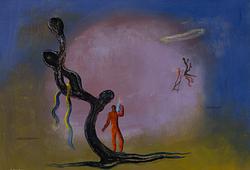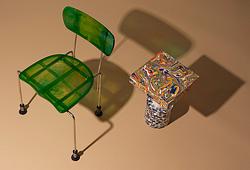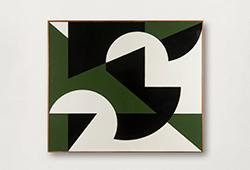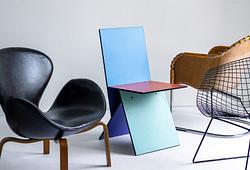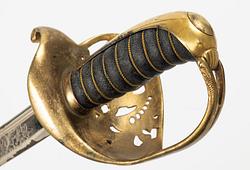Tsuguharu Foujita
Motif from Okinawa
Signed Foujita. Executed in 1938. Watercolour on paper 23 x 32.5 cm. Possibly the artist's wife Kimiyo Foujita pictured. Bukowskis would like to thank Sylvie Buisson for information about the work. A certificate issued by Sylvie Buisson included.
Alkuperä - Provenienssi
The Bengt and Lilavati Häger Collection.
Lilavati and Professor Bengt Häger’s art collection was culturally significant and vast. It is clear that it was founded on the couples cross cultural experiences. Lilavati was a leading exponent of Indian dance and Bengt one of the most important European Impresarios of his day.
Multitalented and highly regarded Bengt Häger (1916-2011) worked inexhaustibly throughout his life to promote dance as an independent art form and field of research. He founded and managed the Swedish Dance Museum, the University Collage of Dance and Circus in Stockholm. He worked actively to bring international guest performances from world leading dance companies. Organized international tours for Swedish dance companies such as the Cullberg Ballet, which he managed 1967-1987. He was the first to bring Peking Opera out of China after the revolution and was a great friend of the renowned Peking Opera singer Mai Lanfang.
For many years Mr Häger was the closest friend and collaborator of the famous Art Collector Rolf the Maré (1888-1964), founder of Ballet Suedois in Paris. Bengt was also involved with UNESCO and founded the Centre International de Dance.
Lilavati Devi (1925-2002). First came to Sweden as a principal performer of the dance company set up by Ram Gopal (1912-2003), the Nijinsky of India. Bengt and Lilavati married in 1954. She became an important ambassador of Indian Dance in Scandinavia. They couple came to inhabit a circle that included some of the major international dancers, performers and choreographers of the last Century.
Muut tiedot
In 1913, 27-year-old Tsuguharu Foujita arrived at Montparnasse in Paris and entered the European art scene. Three years earlier, in 1910, he graduated from the National University of Fine Arts and Music in Tokyo. In Paris, he soon became friends with artists such as Pablo Picasso, Juan Gris and Henri Matisse, and met Amadeo Modigliani, Pascin, Chaim Soutine and Fernand Léger, among many others. He was highly eccentric, with a haircut modeled on an Egyptian statue, a wristwatch tattooed on his wrist, rings in his ears, a fondness for wearing Greek-inspired tunics, and often wore a lampshade on his head instead of a hat.
Tsuguharu Foujita was one of the most famous artists of the 1920s in Montparnasse and, at the height of his career, was more highly regarded than Picasso (the French government bought one of Foujita's works as early as 1926, almost 25 years before they acquired anything from Picasso). Foujita's first studio was at 5 Rue Delambre in Montparnasse. Foujita is one of the few artists in Montparnasse who made a lot of money at a young age. Together with Fernand Léger, he designed sets for famous theater productions and costumes for Rolf de Marée's “Ballet Suédois”.
In 1933, Foujita returned to Japan where he was welcomed as a great celebrity. He is considered one of the most important artists of the 20th century in Japan. Influenced by Japanese woodcuts and the Japanese pictorial tradition, he created a distinctive mode of expression using a technique that was unusual at the time.




